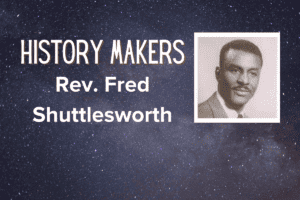
Editor’s note: During the month of December, we’ll be reposting some of our most popular Christmas-themed articles from past years. Here, Ethan Tan’s reflection on “White Christmas” from 2017.
The white Christmas Bing Crosby dreams of was never mine. I grew up in Malaysia, a Christian, a Chinese. In a Muslim-Malay majority country, I was a minority among minorities. To most of the nation, Christmas is something that inspires kitschy seasonal decor and shopping mall sales, rather than family reunions and collective nostalgia. Conservative scolds every now and then issue admonitions that such festivities are haram.
However, secluded in my peculiar Malaysian-Christian-Chinese bubble, Christmas was a time to venture out into the tropical humidity and sing standards like Jingle Bells without any idea what snow or sleighs felt like. After a practice or a performance, damp with sweat and cheer, we’d often find our way to that unassuming symbol of Malaysian harmony, the mamak shop, to talk into the night. These Indian-Muslim restaurants serve an intoxicating mixture of foods—curries, teas, soups, flatbreads—and is as much a fixture of Malaysian fellowship as mashed potatoes and stuffing.
My family’s Christmas reunion dinners were elaborate affairs presided over by my grandmother. She saw to it that we had dishes like turkey and ham, but also curry chicken and bee hoon and murukku, that savory Indian snack so crucial to a holiday’s success. Our presents lay under artificial trees. Wine glass in hand, my dad would turn on Christmas music to play in the background, and I’m sure at some point Bing Crosby’s warm baritone filled the room.
But White Christmas has always aggravated me like a phantom itch. I couldn’t put my finger on why, and had accepted that perhaps I was something of a Grinch, until recently when my wife’s family insisted on watching White Christmas yet again. The nostalgia the film evokes is for a past that not only has no place for me, but that is ultimately fantasy.
White Christmas has always aggravated me like a phantom itch.
Here one might interject: aren’t all Christmas movies fantasy anyway? Yes, they are. I’m reminded of J.R.R. Tolkien’s essay On Fairy-Stories, where he argued that fantasies should be judged chiefly by the truths they communicate. A good fantasy, or a good story, transcends time and space because it is, above all, true. Truth is universal. It is the confines of untruth that are damning.
Tolkien felt fantasies needed to achieve three key functions: recovery, escape, and consolation. Recovery was the process by which an alternate reality prompted us to “clean our windows,” so that “the things seen clearly may be freed from the drab blur of triteness or familiarity.” Escape was a yearning for something beyond ourselves, the greatest escape being that from death, a longing Tolkien compared to an imprisoned man thinking and talking about “other topics than jailers and prison-walls.” Consolation was the happy ending, moral or emotional comfort, that at the finish “reflects a glory backwards.”
By these lights, White Christmas is terrible fantasy. The film stands apart from most of its peers because the truth at its core is nothing but a romanticized version of American society. Consider other stories, like A Christmas Carol or It’s a Wonderful Life, that are akin to biblical parables about generosity, selflessness, and love. The conflict for Scrooge was a mean-spirited selfishness in the face of poverty and suffering, and for George Bailey the inability to recognize the beauty in the mundane. These stories invite us to a quietly radical reevaluation of accepted reality.
In contrast, for White Christmas the conflicts are deviations from the day’s social norms. There is no attempt to imagine another way of seeing, no “recovery” as Tolkien described. It is impossible to separate the antics of Bing Crosby and Rosemary Clooney from the glorification of war and twentieth century norms. Women are portrayed as objects, shrews, problematic when they act outside the men’s good graces. Happy resolutions for the women are, at long last, trusting the men in their lives and, of course, marrying them.
That women are sexual objects is perhaps best captured in the scene in which Judy suggests an engagement to Phil. A woman in command of her sexuality is shown as something odd enough to constitute something funny. Judy puts her hand on Phil’s thigh, leans in, and uses a feminine sexuality meant to be the province of men, while Phil comically shrinks away. In 2017, a time when the strength and sexuality of Gal Gadot’s Wonder Woman is fully a part of her, for example, the gendered humor on display in White Christmas is revealing.
Further, soldiers at war and at home are presented as good old boys—detached from violence, trauma, death—and apparently the trouble is we don’t honor them enough. The nationalism goes unexamined. Certainly, Hollywood has a history of churning out films the envy of agitprop agents everywhere. The West is more inclined to call out propaganda in others than at home. The world White Christmas constructs—where the consequences of Jim Crow are elided, where the Chinese Exclusion Act was repealed only eleven years prior—is as white as Vermont snow. As far as I can tell, the only person of color around is the black bartender on the train.
I’m aware plenty of other films are just as monochromatic. Here it simply reinforces how much the cultural universe of an American Christmas wasn’t meant for people like me. The era White Christmas wants to return to is a whitewashed memory. If this is the sort of “escape” Tolkien talked about, why would any minority or woman want to go along? If the happy ending, Tolkien’s “moral or emotional comfort,” is making real the fancies of 1954, what is there to be happy about?
The era White Christmas wants to return to is a whitewashed memory.
Watching the film again made me miss my Christmases past, the easy blending of different foods and friends, the way we borrowed and stole like holiday pirates from different traditions and cultures to build something I didn’t fully appreciate until I landed in America and became Asian.
The funny thing is I never wanted to be Asian. When I was a kid I remember telling bemused family members that I was English, because I spoke English. When I was in Sunday school, drawing and coloring, a teacher asked why I hadn’t colored in the people. They were as uncolored and white as the paper they were on. I said that was the color of people anyway, why should I color them? She laughed. She said they should be brown. Or yellow.
As we have been plunged into the predicament of retrospectively judging the creative work of men like Harvey Weinstein, Kevin Spacey, and Louis C.K., so too should we reconsider artifacts like White Christmas. Reconsidering a whitewashed Christmas matters. Christmas as an exercise in cheap nationalism fails to live up to the promise of an America big enough to have a place for everyone.
Christmas, if it is to be the best sort of fantasy, should beckon us to reach beyond our narrow notions of race and gender and culture. How can we do this while we hold onto the ghosts of a terrible fantasy? If our faith is to be authentic, how can we afford to ignore how our practices fall short of our highest ideals? To borrow from C.S. Lewis: we are far too easily pleased. We can choose better dreams.
Ethan Tan is a Christian, a Democratic Socialist, and a graduate from the School of Social Policy & Practice at the University of Pennsylvania.


